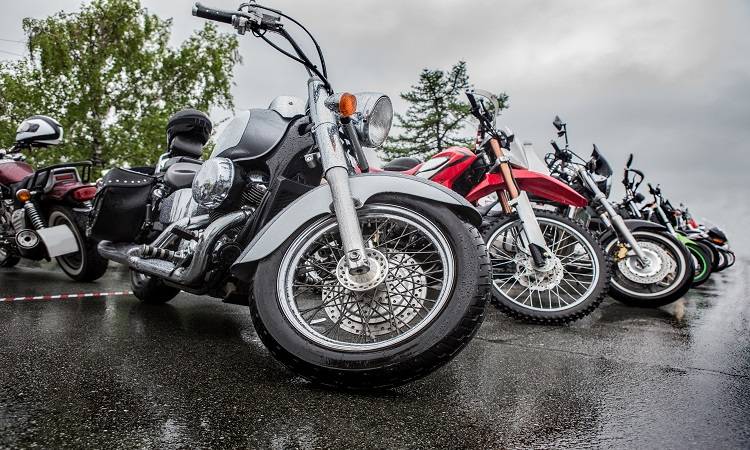Motorcycle Transmission: Working, Parts and Types
Motorcycle Transmission: Working, Parts and Types

Motorcycle transmissions are integral to performance and ride experience. They convert engine power into smooth motion on the road. Understanding how a motorcycle transmission works, its parts and the common problems riders face can enhance the overall biking experience. Additionally, ensuring your two-wheeler is well-protected with bike insurance can prevent financial stress in case of unexpected mechanical issues.
How Does a Motorcycle Transmission Work?
A motorcycle transmission is responsible for transferring the engine's power to the wheels, allowing the bike to move smoothly at different speeds. This system works in the following steps:
1. Power Transfer from the Engine
The clutch first sends power from the engine to the transmission’s main shaft.
2. Fixed Gear Functionality
The fixed gear spins in sync with the main shaft, transferring rotational power.
3. Freewheeling Gear
The freewheeling gear, always linked to the fixed gear, moves without resistance.
4. Slider Gear Engagement
The slider gear engages with the freewheeling gear, which makes the countershaft spin, altering the speed.
5. Gear Shifting
Using the gear lever, the rider shifts gears up or down, controlling the bike’s speed and power.
Motorcycle Transmission Parts
Motorcycle transmissions comprise the following essential parts:
1. Bearing
It helps reduce friction between rotating shafts.
2. Main Shaft
Also known as the input shaft, it plays a central role in transmitting engine power to the gears.
3. Counter Shaft
Connected to the main shaft, it allows for gear reduction, controlling the bike’s final output speed.
4. Gears
The fixed, freewheeling, and slider gears work together to shift and control the bike's speed.
5. Shift Fork
Responsible for moving the gears along the shaft to facilitate smooth gear changes.
6. Shift Drum
It controls the movement of the shift forks for precise gear engagement.
7. Shift Linkage
These components connect the gear lever to the shift drum, enabling easy gear shifts.
8. Chains and Sprockets
These work together to transfer power to the rear wheel, converting rotational motion into forward movement.
9. Drive Belts
In some motorcycles, drive belts replace chains, offering quieter operation and reduced maintenance.
Motorcycle Gears Explained
Motorcycle gears are categorised into three main types based on how they function:
1. Manual Motorcycle Transmission
This is the most common type, allowing the rider to manually control the gear shifts using a clutch and gear lever.
2. Semi-Automatic Motorcycle Transmission
This type allows the rider to shift gears manually, but the transmission handles clutch operation automatically.
3. Automatic Motorcycle Transmission
In this setup, the transmission automatically shifts gears without the rider needing to engage the clutch.
Common Problems With Motorcycle Transmissions
Motorcycle transmissions may encounter the following issues:
1. Clunking Noises
A sign of worn gears or misadjusted components.
2. Jumping Out of Gear
Indicates damaged gear teeth or a malfunctioning shift fork.
3. Hard Shifting
Caused by misadjusted clutch cables or worn gears.
4. Delayed Acceleration
This could be a result of a slipping clutch or malfunctioning transmission.
5. Difficulty Finding Neutral
Misadjusted clutch systems or worn shift forks can make it hard to find neutral, affecting the ease of starting or stopping.
6. Contaminated Oil
Old or dirty engine oil can reduce transmission efficiency and cause shifting problems.
Conclusion
Understanding motorcycle transmission parts and their function is crucial for maintaining your bike's performance. Regular maintenance, addressing issues promptly, and investing in comprehensive bike insurance can ensure you enjoy a smooth, hassle-free ride.
FAQs
1. How often should I check my motorcycle’s transmission?
Regular checks every 6,000 to 8,000 miles can help prevent issues.
2. Can I switch from manual to semi-automatic transmission?
Yes, but it requires replacing the transmission, which may be costly.
3. Why is my bike’s transmission making a grinding noise?
Grinding noises could indicate a problem with the gears or clutch. You must have it inspected immediately.
Disclaimer: The above information is for illustrative purposes only. For more details, please refer to the policy wordings and prospectus before concluding the sales.
RELATED ARTICLES
4 Important Bike Riding Skills You Should Know
Difference between Fuel Injection and Carburetion in Bikes
The Complete Guide to Two Wheeler Anti-Lock Braking Systems
What is a PUC? Do you need it for a two-wheeler?
5 Things to Know about Drive Chain and Its Maintenance










 Health Insurance
Health Insurance  Travel Insurance
Travel Insurance  Car Insurance
Car Insurance  Cyber Insurance
Cyber Insurance  Critical Illness Insurance
Critical Illness Insurance
 Pet Insurance
Pet Insurance
 Bike/Two Wheeler Insurance
Bike/Two Wheeler Insurance  Home Insurance
Home Insurance  Third Party Vehicle Ins.
Third Party Vehicle Ins.  Tractor Insurance
Tractor Insurance  Goods Carrying Vehicle Ins.
Goods Carrying Vehicle Ins.  Passenger Carrying Vehicle Ins.
Passenger Carrying Vehicle Ins.  Compulsory Personal Accident Insurance
Compulsory Personal Accident Insurance  Travel Insurance
Travel Insurance  Rural
Rural 











